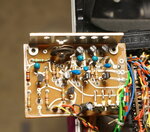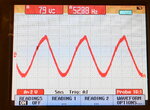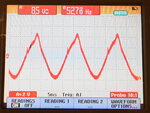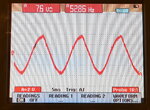hafrse
Full Member level 3

- Joined
- Aug 6, 2007
- Messages
- 170
- Helped
- 1
- Reputation
- 2
- Reaction score
- 3
- Trophy points
- 1,298
- Activity points
- 2,421
Hi,
Trying to locate the source of an audio hum on the audio output channels of a vintage tape recorder when the DC motor is activated. the frequency of the hum changes when the DC motor runs faster or slower, when the motor is off then no hum, not sure where to look if it is a mechanical problem in the motor which inducing the hum on the power supply or something is wrong in the motor control circuit (attached in this post)
Thanks for any help
George
Trying to locate the source of an audio hum on the audio output channels of a vintage tape recorder when the DC motor is activated. the frequency of the hum changes when the DC motor runs faster or slower, when the motor is off then no hum, not sure where to look if it is a mechanical problem in the motor which inducing the hum on the power supply or something is wrong in the motor control circuit (attached in this post)
Thanks for any help
George





